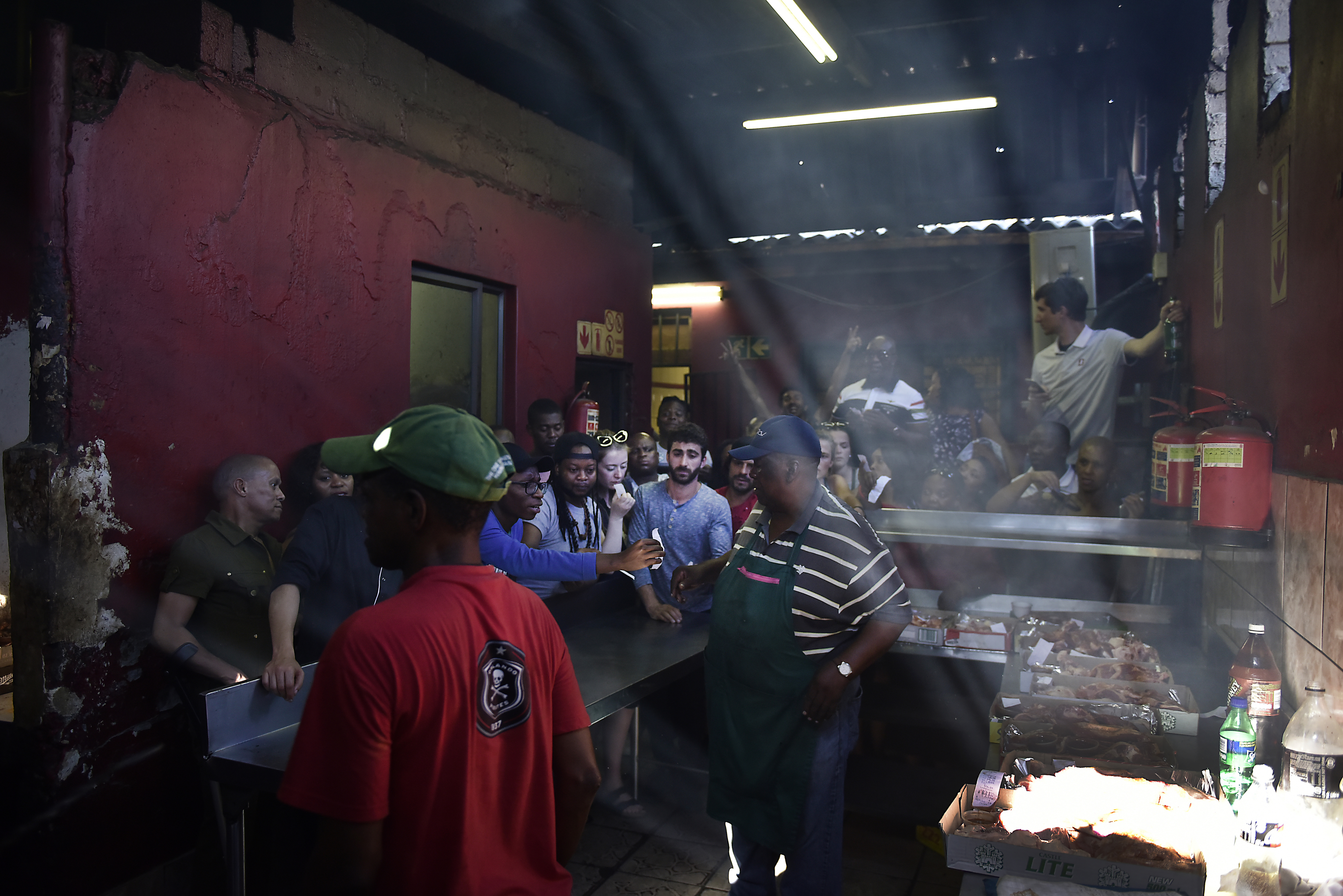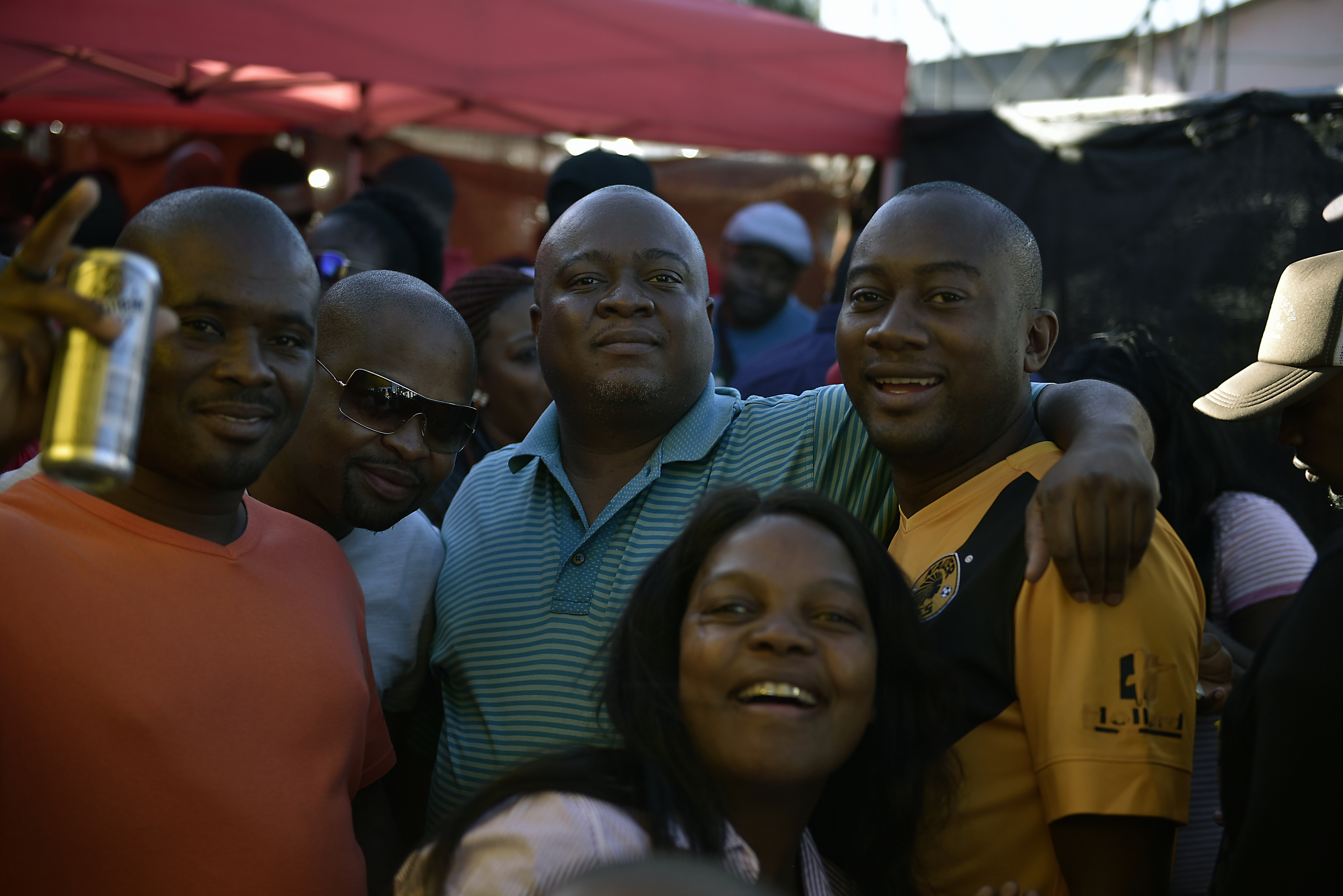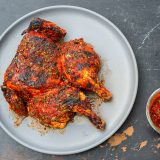Inyama! Inyama! Inyama!
It’s pushing past 120°F and the crowd is chanting. In the heart of Mzoli’s Place, wood fires roar in massive metal ovens tended by men sweating through their shirts. They splash the coals with water from 2-liter soda bottles, tempering the flames and sending steam hissing into the smoky rooms. With long wires twisted into forks, they toss meat around the grates.
Buckets—5, 10, 15 pounds each of sausages and steaks, chops and chickens—pile up, and a crowd respecting no line between customer and kitchen heaves toward the fires, eager—insistent, actually—that their meal be the next set over the flames.
They are black, English, Indian, Afrikaner and many iterations between. They have come deep into Gugulethu, a sprawling and violent black township, a warren of shacks and outhouses 11 miles into the outskirts of Cape Town. They have come for braai, a South African style of barbecue that borrows flavors and techniques from across the map. South Africans have struggled to mix races, but they excel at mixing cuisines.
They have waited hours in a line snaking by the hundreds. So they chant. Races and voices meld, chanting in four languages—Xhosa, Zulu, Swati, Ndebele—a singular, melodic word that has brought them together: Inyama!
Meat! Meat! Meat!
I have come to Cape Town to learn braai, for barbecue here—as in the American South—is as much a culture as a way of cooking. It is an amalgamation of South African, of course, but also Dutch, English, Indian, Mozambican, Zimbabwean, Portuguese and a smattering of other lands.
The result is meat and seafood with robustly exciting flavors. Piquant and salty. Or sometimes sweet and savory. Possibly herbaceous and peppery. Almost always seared and thickly sauced. There is no singular approach to braai, and as I research, I am most drawn to piri piri, a cross-cultural take that seems to combine all of the above.
It has been nearly 25 years since the dismantling of apartheid. Much has changed. And not. Poverty and inequality still grip many. Yet walking the stalls of Cape Town’s vibrant food markets—where biltong, the local jerky, abuts dim sum—and sharing tables at its now world-class restaurants, I am struck by the mix of faces and voices. It suggests a level of integration and opportunity missing when I last visited some 20 years ago.

My first stop on a six-day visit is Spek & Bone, an upscale spot in Stellenbosch, a 40-minute drive into the wine country that surrounds Cape Town. On a brick patio under the canopy of the region’s oldest producing grapevine, Bertus Basson—one of South Africa’s most celebrated chefs—pairs crisp local wines with dishes that traverse borders.
I start with steak tartare—served in the hollowed and polished femur of a giraffe—and ponder the sirloin with monkey gland sauce (neither monkeys nor glands are harmed in the making of this spicy fruit sauce). Basson urges me to taste the barbecue-smoked piri piri chicken wings. They are addictive. Brilliantly red, lightly spicy, deeply smoky, they are sweet and… smooth.
Piri piri isn’t South African. Except it is. That’s the way of things here, Basson explains. The country was primed to co-opt and reimagine the foods and flavors of others. After centuries of colonialism and trade brought ingredients from across the globe, apartheid left the country culturally and economically isolated for decades.
“When things are secluded, creativity changes,” Basson says. “It forced us to look inward and ask who we are. We’ve taken things that don’t normally exist here and made them our own.”
Piri piri, for example. Its origins are Portuguese, but today it’s co-owned by South Africa, Namibia and Mozambique. The name can refer to the finger- staining chili pepper sauce, usually spiked with garlic, sugar and a whole lot of cayenne, lemon and paprika. Just as often it refers to whatever the sauce douses. And in South Africa, it can douse anything. Sausage. Pork. Shrimp. Squid. Even soupy bowls of tender-cooked chicken livers.
Basson’s wings inspire me. But the picture feels incomplete; true braai is a more substantial affair. So over the next couple days I crisscross Cape Town—a city built around and up a mountain at the very bottom of Africa—to visit three popular restaurants known for piri piri.
At Vasco da Gama Taverna, a Portuguese-inspired beer hall back in Cape Town, piri piri chicken is a serious affair, prompting the waitress to set out bowls of lemon water for hand-washing, then tie a full-body plastic butcher’s apron around me.
I brace for an intense, and messy, experience. When my half-chicken portion—blazing red as piri piri must—arrives, the flavor is… flaccid. Mildly peppery at most. The meat is dry. Neither the lemon water nor the apron are necessary.
The experience is much the same across town. At Toni’s on Kloof, an open-air restaurant with views of towering Table Mountain, over which clouds spill like an overflowing bathtub, the chicken is… forgettable. At Fish on the Rocks, a yellow seafood shack perched on a thumb of land poking into Hout Bay, the piri piri shrimp are so tender they dissolve in my mouth. But the sauce? It was red. Not much more.
I was feeling a bit defeated. Outside Basson’s high-end wine bar, piri piri tasted like mediocre barbecue, a sentiment I found myself bemoaning to a barrel-chested Afrikaner (the descendants of Dutch settlers) at a pub. After loudly lamenting that his stomach could no longer handle his love of piri piri, he made sure I and everyone nearby knew how foolish I’d been.
“You went where?” he shouted, shoving a bowl of spicy Peppadew peppers and nuts at me. “No! I will get you good piri piri.”
Which is how I found myself at Dias Tavern, a long, dark Portuguese joint—a rowdy anniversary-dinner-with-friends sort of place—hidden on the second floor of a Cape Town office building. In a jam of people and athletic pendants, I listen to a man belt out Gerry Rafferty’s “Baker Street” and force myself to drink something called catemba—an inexplicable blend of cold red wine and Coke. Even worse than it sounds.
Not a hopeful start. But the menu reads like a piri piri superstore—giblets, sausage, rump steak, shrimp, livers, chicken by half or whole. I order half a chicken and a bowl of livers.
The livers arrive first—a soupy, lumpy bowl of red. My mouth comes alive. The livers are tender and the sauce is bright. Warm. Savory. Salty. Fatty. Fiery. This is Bertus Basson’s wings in liquid form. I resist the urge to ask for bread to sop up every drop.
from the breast, a moist and succulent and boldly flavored bite. It tastes of warm and smooth—that word again. Of heat and sweet. And so very tender.
In part, that’s because the chickens sit in the sauce for many hours, saturating and soaking in a slurry of ground chilies, garlic, bay leaves, lemon juice, salt and sugar, explains Jose Hilario, one of the owners of Dias. The roasting is so very slow, followed by a quick char finish.
The sauce is a winner. The technique? Not so much. At least not outside a restaurant. To learn another side of braai, I head to Mzoli’s, a bright spot in a community of homes stitched together from wooden pallets, sheet metal and chicken wire. This is the South Africa that was supposed to fade after Nelson Mandela was elected in 1994.
As I approach the low-slung brick building that houses Mzoli’s, aromatic waves of wood and meat strike me. Inside, a crowd gathers in the white-tiled deli piled with meat, the floor slick with a coat of fat.
The system—if that word truly applies—is simple. Somehow get the attention of a woman behind the counter. She heaps your order into enamel bowls or foil-lined boxes. If she is out of what you want, the man sawing legs of beef and lamb and sides of pork through an unguarded band saw will slice more. The order is dusted generously with a dry seasoning heavy with MSG and turmeric deliciousness. Then you pay and it is yours.
For 200 Rand (less than $15), I get a selection of chops and steaks, enough raw meat to feed 10, maybe 12 people. I haul it back through a narrow passage to the cook rooms. That’s when the waiting begins. Many have been there for hours.

“The heat is very good to me,” Ricardo Adams, one of the cooks, says as he forks chops and steaks over coals in one of the nine ovens. “Just by standing here I can tell the temperature of the grill.”
To me, it’s a bit like being burned alive.
This isn’t precious fawning over a perfect bed of coals. This isn’t nuancing a pricey, pampered grill. This is flame and meat at their most basic. And the two are married far longer than I would have considered prudent. The men at the ovens are unfazed. Eventually, they pull the chops and chickens and links back into the bowls and boxes. Massive brushes dip into tubs of sauce—the recipe for which won’t be shared—and lacquer the meat.
“I am so tired to be waiting for my meat,” says Nigel Woodstock, who waited by the stoves for hours. “But at the end of the day, I know I’ll be licking my fingers. Waiting is worth it to get the perfect meat braaied. Not cooked. Braaied.”
This is when it gets interesting. Armed with your mound of grilled and sauced meat, you head outside. Next door is a covered area with tables and music. People are joyous, dancing and tearing into chunks of meat. It’s exuberantly cacophonous. There are no utensils. No napkins. Just dancing. Music. And meat.




